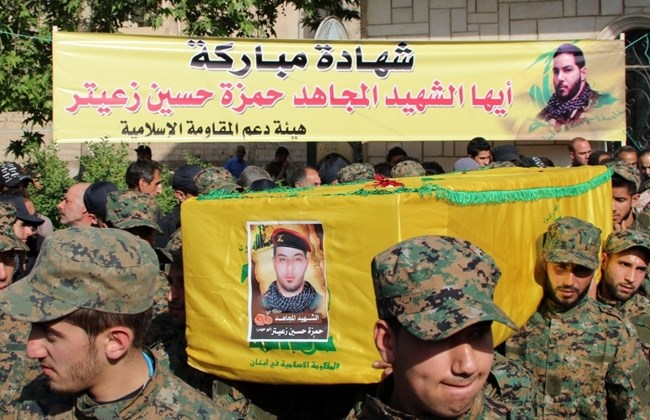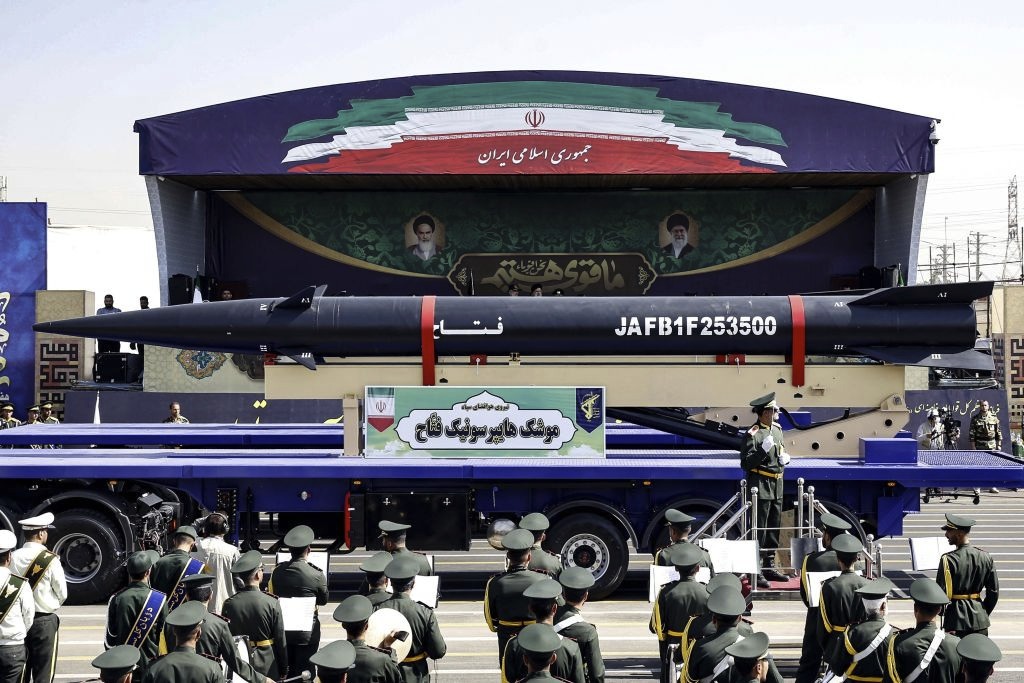Hizbullah Fighters Escort Journalists on Tour of Qalamoun Mountains
Naharnet/11.05.15
In the pockets of the rugged mountains near the Lebanese border, the distinctive yellow flag of Hizbullah now flies where al-Qaida militants once held sway. These gains in the Qalamoun Mountains represent a bright spot for embattled Syrian President Bashar Assad’s government, now reeling from a unified insurgent assault in the country’s northwest. And again, they show the influence of the Lebanese group in Syria’s civil war, grinding on into its fifth year after more than 220,000 people were killed. A team of Associated Press journalists traveling with Hizbullah into Syria found smiling Hizbullah fighters proudly showing newly dismantled booby traps and food quickly left behind by the Islamist insurgents as commanders promised further advances they say protect Lebanon.
The Qalamoun Mountains are on the Syrian side of the border with Lebanon. They tower near Syria’s capital, Damascus, and link that base of Assad’s power to the coast, an enclave of his Alawite sect, an off-shoot of Shiite Islam. But the Sunni militants of the local al-Qaida chapter called al-Nusra Front and the Islamic State group have been dug into the terrain for years.
Although Hizbullah officials say a full-blown assault to recover Qalamoun hasn’t started, Hizbullah fighters in recent days have captured large areas and strategic hills. On Thursday, Hizbullah fighters attacking from the fields of the Syrian border town of Assal al-Ward met comrades on the offensive from the outskirts of the Lebanese village of Brital. “The situation is better than perfect,” one smiling Hizbullah fighter said, speaking along with others anonymously as part of the conditions Hizbullah set to allow AP journalists to make the trip. Insurgents appear to have left their camps in a hurry. Groceries, medicines and other supplies littered their camps. At a Hizbullah position, fighters installed a 130 mm cannon pointed deeper into Syria. Wooden ammunition boxes nearby bore Persian words — a sign of the support of Iran, a major benefactor of both Hizbullah and Assad.
Shelling could be heard in the distance, which Hizbullah fighters attributed to clashes around Syria’s Barouh mountain to the north. Two giant Hizbullah bulldozers ground out a sand road on one of the region’s mountains. Some 3,000 militants are in the Qalamoun region, almost equally split between the al-Nusra Front and the Islamic State group, a Hizbullah commander recently said in Beirut. He said Hizbullah and Syrian troops surround the Qalamoun from the north, the east and the south, as well as part of the west, squeezing the Islamic militants who remain. The total area of the Qalamoun being contested is about 1,000 square kilometers (386 square miles) — of which 340 square kilometers (131 square miles) lie in Lebanon and are under militants’ control. Hizbullah cites that fear of militants sweeping through Shiite and Christian villages in diverse Lebanon as one of the main reasons for their involvement in Syria.
“We are giving our blood so that people (in Lebanon) live with dignity and safety,” Hizbullah leader Sayyed Hassan Nasrallah recently said.
But analysts say the fight is not expected to have immediate military repercussions in Lebanon — though it directly affects Assad’s survival and Hizbullah’s reputation. Some observers however fear the Qalamoun offensive could prompt Islamist militants to launch attacks in Shiite areas of Lebanon itself, including Beirut’s southern suburbs. A wave of bombings targeting Hizbullah strongholds in 2013 and 2014 left scores of people dead and wounded. Already, residents in a southern Beirut stronghold of Hizbullah say security has been tightened in the area, with officials searching cars and checking identification papers.






















